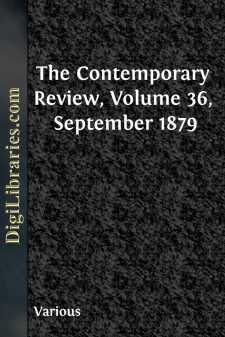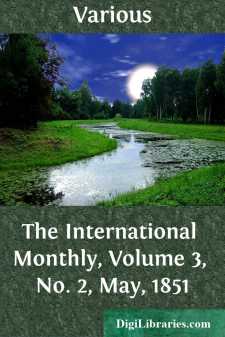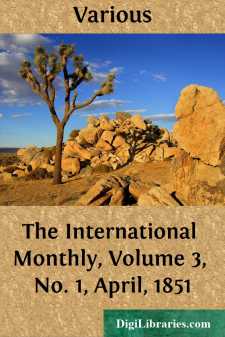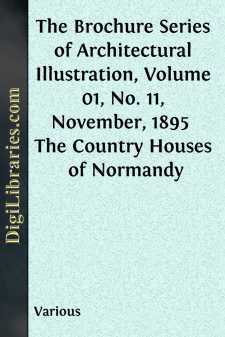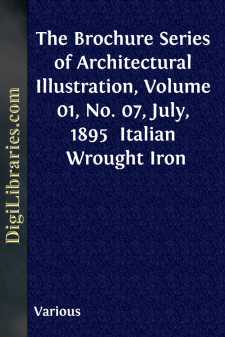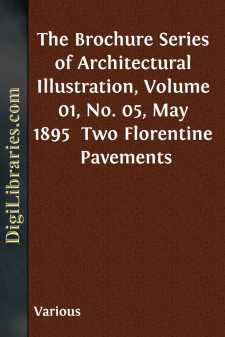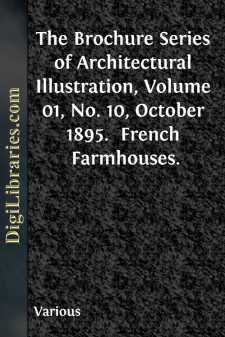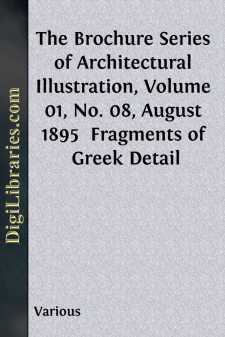Periodicals
- Art
- Children's periodicals 59
- Entertainment 5
- Food/Wine 2
- Games/Humor 455
- General 661
- Health 1
- History 53
- House/Home 1
- Regional 62
- Science/Nature 118
- Transportation 10
Art Books
Sort by:
by:
Various
THE FUTURE OF CHINA. The late reconquest by China of some of her former possessions in Central Asia, and the firm tone in which she is urging her demands upon Russia, in respect of the Kuldja territory, are giving her a prominence as a factor in Asiatic politics which she can scarcely be said to have claimed before. These signs of tenacity of purpose, if not of actual vitality, acquire an additional...
more...
by:
Various
GEORGE WILKINS KENDALL. We have here a capital portrait of the editor in chief of the New Orleans Picayune, George W. Kendall, who, as an editor, author, traveller, or bon garçon, is world-famous, and every where entitled to be chairman in assemblies of these several necessary classes of people. Take him for all in all, he may be described as a new Chevalier Bayard, baptized in the spirit of fun, and...
more...
by:
Various
JAMES FENIMORE COOPER. The readers of the International have in the above engraving, from a Daguerreotype by Brady, the best portrait ever published of an illustrious countryman of ours, who, as a novelist, take him all in all, is entitled to precedence of every other now living. "With what amazing power," exclaims Balzac, in the Revue de Paris, "has he painted nature! how all his pages...
more...
by:
Various
THOMAS CHATTERTON. In the history of English literature there is no name that inspires a profounder melancholy than that of the "marvellous boy" Chatterton, of whom it must be said that in genius he surpassed any one who ever died so young, and that in suffering he had larger experience than almost any one who has lived to old age. Shelley says of him:"'Mid others of less note came one...
more...
by:
Various
THE COUNTRY HOUSES OF NORMANDY. THE houses chosen for illustration in this number are of different types, of different dates, built for men of different stations in life, and are constructed of different materials. They are, however, all in the province of Normandy, in northern France, and they are all situated outside the towns; further than this it may not be well to go in attempting to classify them...
more...
by:
Various
ITALIAN WROUGHT IRON. The wrought iron of the middle ages, and of the time of the Renaissance, and even down to the last century, in Italy, France, and Germany showed, in the crudest examples, the principal virtues of all true decorative art. The reason is not far to seek. The difficulties in the way of working the material with ease imposed certain limitations in design and execution which could not...
more...
by:
Various
TWO FLORENTINE PAVEMENTS. The church of San Miniato al Monte, just outside the walls southeast of Florence, and the Baptistery, or church of San Giovanni Battista, in Florence, are among the finest examples of the Tuscan Romanesque style, and both probably date from about the same time—the early part of the twelfth century—although the date of San Miniato has until recently been referred several...
more...
by:
Various
FRENCH FARMHOUSES. As it is the purpose of THE BROCHURE SERIES to cover as wide a field as possible in choice of subject matter for its illustrations, and at the same time hold rigidly to the idea of furnishing only what will be useful to its subscribers, it has seemed desirable to present something a little nearer our everyday life than the Italian work which has thus far formed the greater part of...
more...
by:
Various
RENAISSANCE PANELS FROM PERUGIA. The carved walnut panels from the choir stalls of the Church of San Pietro de' Casinense in Perugia, designed by Stefano da Bergamo in 1535, which are given as illustrations in this number, are excellent examples of the ornament of the later period of the Italian Renaissance. This form of ornament was first used in flat painted panels upon pilasters, such as the...
more...
by:
Various
FRAGMENTS OF GREEK DETAIL. The Art of Greece during the fifth century, B.C., was developed in an amazingly short time from a condition of almost archaic rudeness to that of the greatest perfection which the world has ever seen. At the close of the Persian wars the Athenians, under Pericles, began rebuilding their city and perfecting themselves in all the arts of civilization, and their progress in the...
more...


